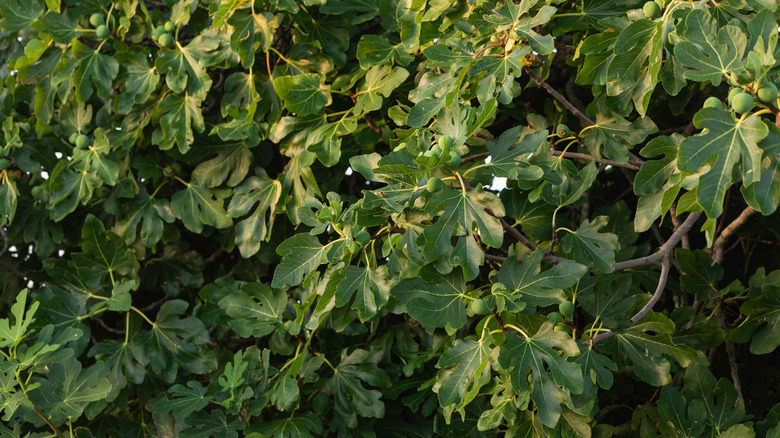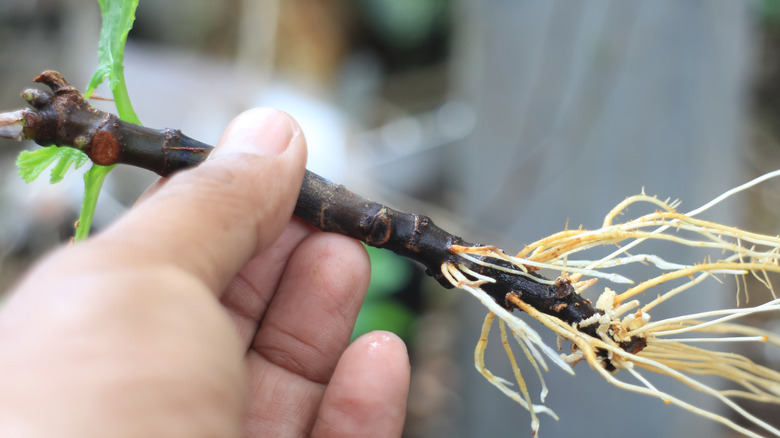Yes, You Can Propagate Your Fig Tree In October. Here's How
When autumn rolls around, gardeners may believe their job is done for the year. However, there are still plenty of things you can do to treat your garden in October. Propagating your fig tree (Ficus carica) is one such task that can be completed in the fall. These trees grow well in hardiness zones 6-9, so propagating them is a good option if one is already thriving in your yard and you'd like to have more. It's also a great gift idea.
While spring and summer may seem ideal for creating a new fig tree, October is actually the perfect time for this because the roots of the plant grow well ahead of its winter period of inactivity. Also, the young shoots will be protected from the extreme heat of summer or the harsh cold of winter while they do the delicate work of growing new roots. So, strike now to get a fresh new tree or two.
How to propagate a fig tree
There are a few easy and helpful tips to successfully propagate a fig and get the healthiest young trees possible. First, you will need to chop off about 20 centimeters of a branch. Try to select a relatively new branch that looks healthy and is free of pests or infection. Then, trim the base of the branch so that a leaf node is right near the bottom as this is the part that has a good chance of rooting. You can also make a series of shallow vertical cuts along the base to give it more opportunity to grow out into the soil. To help promote viable roots, dip the end of the branch into a rooting hormone, like this Garden Safe root stimulator from Lowe's. You can also give root cuttings a boost with Pinterest's hydrogen peroxide trick, which can decrease the chance of disease.
Finally, place the cuttings into well-drained soil to prevent rotting in stagnant water. You can either use potting mixes meant for succulents or cacti since they are designed to drain well, or you can create your own mix of sand and potting soil. The cuttings should start to root out into the soil in roughly 4 to 6 weeks. You can help them along by placing them in a warm location, protected from wind and extreme temperatures. If it looks like the cuttings haven't rooted because you don't see any new leaves growing, check for roots or lightly scrape the bark near the base. If a bit of green shows through, they are likely still alive and growing.

